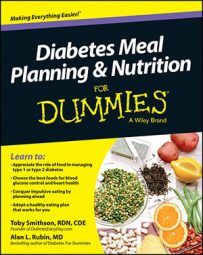Finding an eating plan that facilitates weight management, blood glucose control, and is heart healthy doesn’t mean everything about your old life goes on the trash heap. People have interesting relationships with food, and sometimes an emotional connection with the past is strong.
It’s entirely probable that your grandmother’s pumpkin pie can fit somewhere in your eating plan now and then. But to know just where and how often that old favorite can fit, you really need to review the nutrition facts label. On Grandma’s pumpkin pie, however, there is no nutrition facts label.
Calculating nutrition facts
Fortunately, in this age where information is literally at your fingertips, you too can be dietitian-for-a-day. Calculating the basic nutrition facts for that Thanksgiving favorite may include calories, carbohydrates, fat, protein, sodium, and serving size.
To make the calculation you simply find a website that provides information for each individual ingredient, add the values to find the nutrition facts for the entire pie, and then divide each by the number of pieces the pie could yield. The grand tally is illustrated in the table, and you can probably predict that a healthy slice of Grandma’s pumpkin pie will be a decidedly small one.
If you were to declare that this recipe makes 8 servings, each serving would be more than 300 calories, 41 grams carbohydrate, 13 grams saturated fat from lard, and 204 milligrams sodium. Of course, after a piece of that pie, Grandma would spend the rest of the afternoon hoeing the garden. If five hours of garden hoeing isn’t on your agenda for the day, you could recalculate this recipe with a few choice ingredient substitutions.
| Ingredient | Calories | Carbohydrate | Fat | Protein | Sodium |
|---|---|---|---|---|---|
| 1-1/4 cups all-purpose flour | 569 | 119g | 1g | 16g | 3mg |
| 1/2 teaspoon salt | 0 | 0 | 0 | 0 | 1,163mg |
| 1/3 cup lard | 610 | 0 | 68g | 0 | 0 |
| 4 tbsp water | 0 | 0 | 0 | 0 | 0 |
| 1 pound canned pumpkin | 167 | 40g | 1g | 5g | 25mg |
| 3/4 cup sugar | 540 | 144g | 0 | 0 | 0 |
| 1 tsp. cinnamon | 6 | 2g | 0 | 0 | 1mg |
| 1/2 tsp. ground ginger | 3 | 1g | 0 | 0 | 0 |
| 1/2 tsp. ground nutmeg | 6 | 1g | 0 | 0 | 0 |
| 3 eggs | 221 | 1g | 15g | 19g | 210mg |
| 2/3 cup evaporated milk | 226 | 17g | 13g | 11g | 179mg |
| 1/2 cup whole milk | 73 | 6g | 4g | 4g | 49mg |
| Totals | 2421 | 331g | 102g | 55g | 1631mg |
| Per serving @ 8 slices | 303 | 41g | 13g | 7g | 204mg |
Modifying ingredients
Many recipes can be modified to improve the nutrient picture, and every little bit adds up. Grandma’s pumpkin pie, for example, could lose the salt (and 146 milligrams sodium) and could go into a premade pie shell to eliminate most of the saturated fat.
Substitute 1% or skim milk for whole milk, egg substitute for the eggs, and half of the sugar with a no-calorie sweetener suitable for baking, and you may find Grandma’s memory can come with a much better nutrition picture.
Healthier substitutions can be incorporated into your diet in many ways. Here are just a few other difference-makers for your consideration:
Remove skin from poultry.
Always look for reduced sodium soups, broths, soy sauce, and cheese.
Select leaner cuts of meat — substitute pork tenderloin for pork chops, turkey bacon for bacon, or ground round or lean ground beef for higher fat mixes.
Use whole-wheat pasta and flours.
Substitute applesauce or other fruit puree for some of the fat in baking recipes.
It’s not about making the biggest sacrifice; it’s about finding a healthier eating plan you can stay with over the long run.

